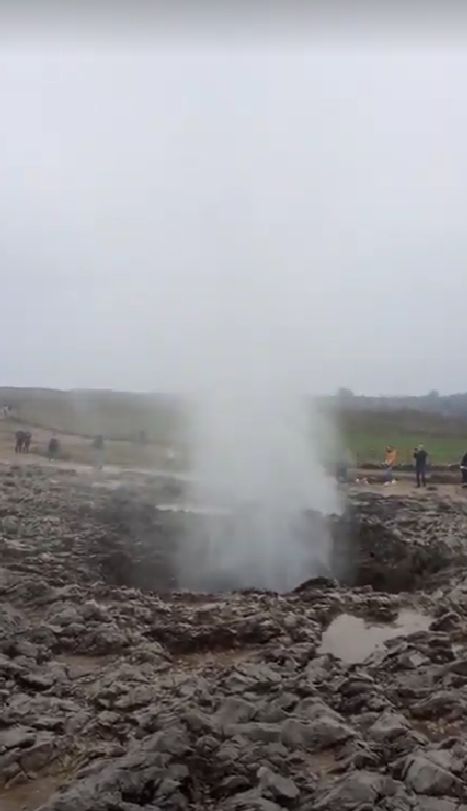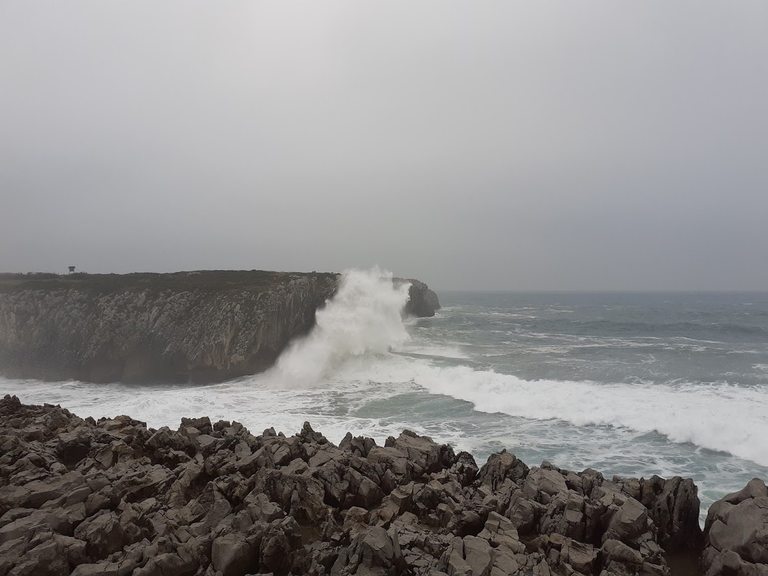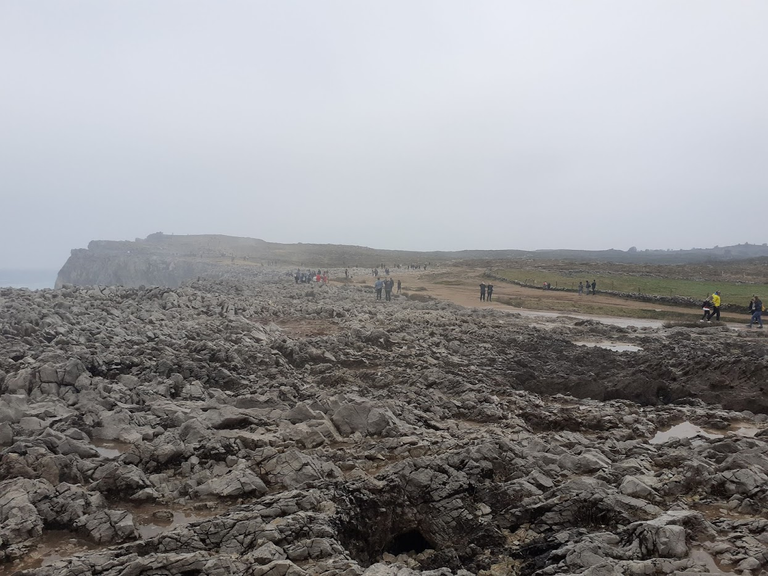
W asturyjskiej miejscowości Llames warto zobaczyć tutejsze klify i niesamowite przyrodnicze zjawisko. Kiedy morze jest wzburzone czeka nas gejzerowy spektakl.
In the Asturian town of Llames, the local cliffs and an amazing natural phenomenon are worth seeing. When the sea is agitated a geyser spectacle awaits!

Erozja morska i erozja deszczowa spowodowały, że w wapiennej skale pojawiły się pęknięcia. Część szczelin przeistoczyła się w skalne kominy, prowadzące od morza do lądu. Mocno wzburzone morze i skumulowane powietrze wydostają się nimi na powierzchnię w postaci gejzerów. Wysokość strumieni wody pod ciśnieniem sięga kilkunastu metrów.
Sea and rain erosion have caused cracks to appear in the limestone rock. Some of the cracks have transformed into rock chimneys, leading from the sea to the land. Heavily agitated sea and accumulated air spewed them to the surface in the form of geysers. The height of the pressurized water streams reaches several meters.
Dodatek z YT: VIDEO - krótki filmik pokazujący to zjawisko zarówno z bliska, jak i z lotu ptaka.
Addition from YT: VIDEO - a short video showing this phenomenon both up close and from a bird's eye view.
A teraz pytanie: skąd nazwa? Bufonami (org. Bufones, pozwoliłam sobie spolszczyć) nazywane są te pęknięcia (choć spotkałam się też z teorią, że Bufones to po prostu znajdujące się tam wapienne klify), z których na powierzchnię wydostaje się fontanna wody. Temu przemieszczaniu towarzyszy charakterystyczny odgłos, który może przypominać brzmieniem głośny ryk. Bufar oznacza właśnie „resoplar con fuerza y furor [algunos animales, como el toro etc.” czyli „parskanie/dmuchanie z mocą i furią [jak niektóre zwierzęra, np. byk]”. Bufón to w wolnym tłumaczeniu także błazen. Może i nazwa jest słuszna – być może gejzerowe spektakle mogą przypominać atrakcje w wesołym miasteczku.
Now the question: where did the name come from? Bufones are called those cracks (although I have also encountered the theory that Bufones are simply limestone cliffs located there) from which a fountain of water rises to the surface. This movement is accompanied by a distinctive sound, which may resemble a loud roar. The Bufar just means "resoplar con fuerza y furor [algunos animales, como el toro etc.]," i.e. "screeching/blowing with power and fury [like some animals, such as the bull]." Bufón is also freely translated as clown. Maybe the name is right - perhaps geyser shows can resemble attractions at an amusement park.

Poza tym, nawet przy spokojniejszym morzu widok jest piękny.
Dodatkowo, po drodze na pieszym szlaku prowadzącym na klify, można spotkać pasące się na wolności bydło.
Besides, even with the calmer sea, the view is beautiful.
In addition, along the way on the walking trail leading to the cliffs, you can meet cattle grazing in the wild.

Do najbardziej znanych "bufones" należą:
- Bufones de Arenillas,
- Bufones de Santiuste,
- Bufones de Pría (tutaj byłam, stąd też są ów zdjęcia).
Some of the best known "bufones" include:
- Bufones de Arenillas,
- Bufones de Santiuste,
- Bufones de Pría (this is where I was, hence the photos).

PS Zbliżając się do bufonów, trzeba przygotować się na "mżawkę". ;)
PS When approaching the buffoons, be prepared to "drizzle." ;)

Byłam zaskoczona, jak blisko potrafimy podejść do urwiska, aby oglądać wzburzone morze!
I was surprised how close we can get to the cliff to watch the stormy sea!
Congratulations @pocichu! You have completed the following achievement on the Hive blockchain And have been rewarded with New badge(s)
Your next payout target is 100 HP.
The unit is Hive Power equivalent because post and comment rewards can be split into HP and HBD
You can view your badges on your board and compare yourself to others in the Ranking
If you no longer want to receive notifications, reply to this comment with the word
STOPCheck out our last posts: